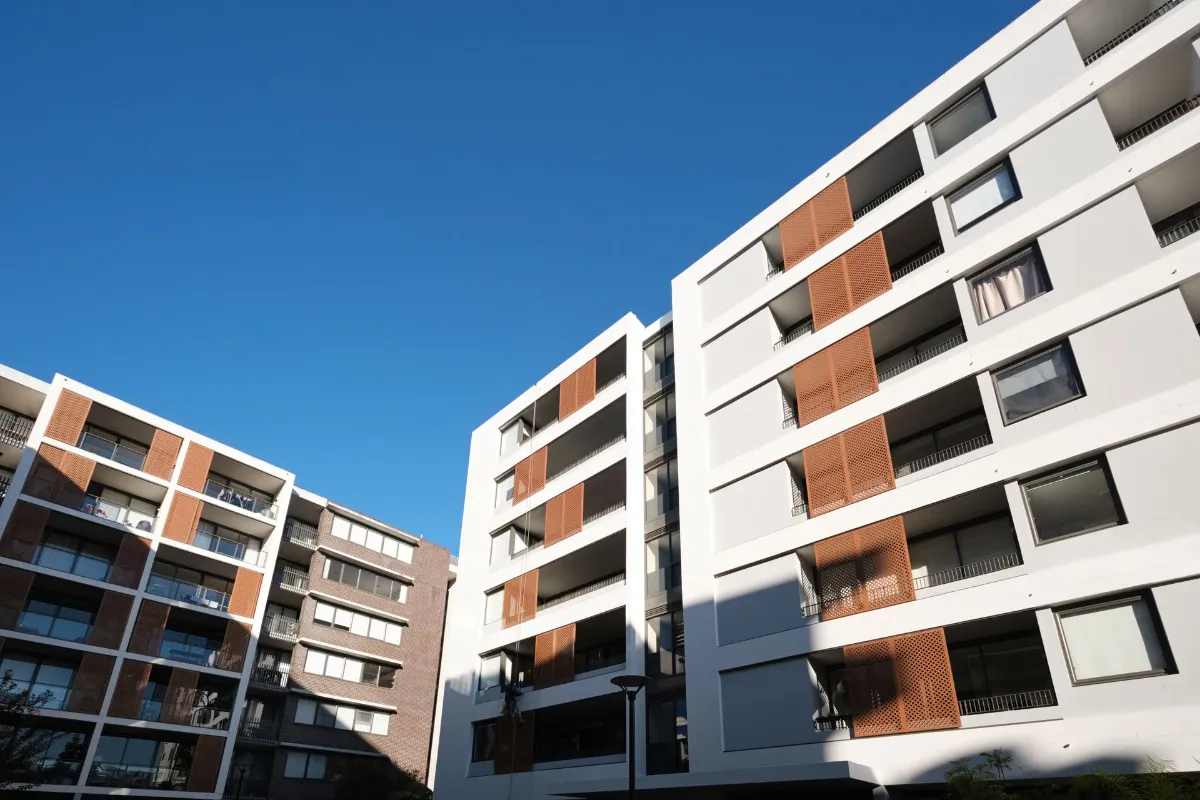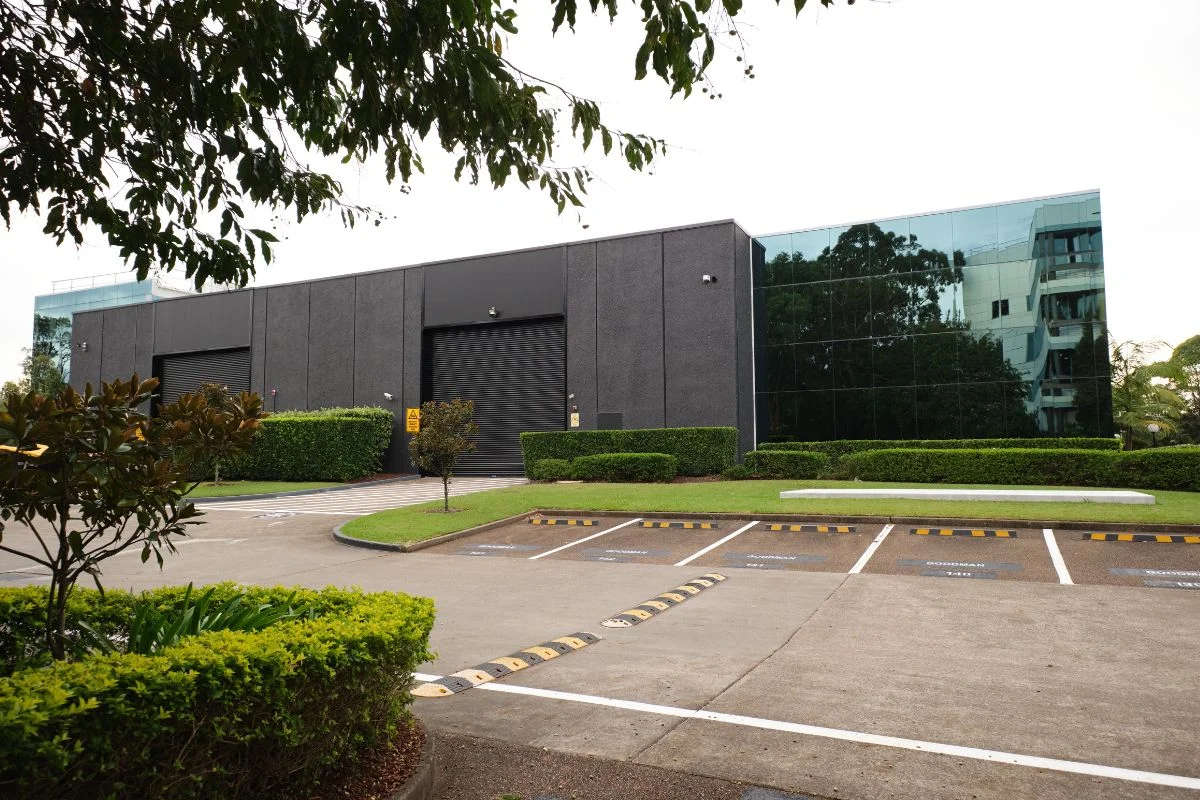How commercial painting can add value to your property

Perception carries weight. What people see influences their confidence in what they can’t. The value of a commercial property is determined by many factors, and aesthetics is certainly one of them. While you can’t put an exact figure on the return from painting, the impact is real. A well-maintained building feels cared for, makes a stronger impression and gives people more confidence in the asset behind the façade.
At Dukes, we’ve been successfully transforming spaces since 1958 while prioritising safety, efficiency and a high-quality finish. We support the long-term upkeep of assets while helping clients optimise function and presentation. Whether it’s a large strata complex or a high-traffic retail site, we deliver results that reflect well on the space and the people behind its care.
“Perception carries weight. What people see influences their confidence in what they can’t.”
Driving demand with appearance and perception
The appearance of a building plays a role in how quickly it’s noticed, how well it’s received and how seriously it’s considered. In commercial environments, that can influence leasing speed, perceived rental value and public interest. Buildings that are tidy, updated and visually consistent are more likely to appeal to prospective tenants or clients.
Repainting helps maintain a sense of order and credibility. When a façade is clean and modern, it reflects a level of care that people associate with good management. That kind of presentation builds trust that what’s behind the exterior is equally well handled, whether it’s a business, a tenancy or a shared space.
Perception increases a building’s appeal, even if it can’t be measured precisely. When a building is easier to lease, easier to promote and more appealing to stand behind, it performs more strongly as an asset.
“A clean, modern façade reflects the level of care people associate with good management.”
Preserving the asset with long-term protection
Paint systems form part of a building’s protective envelope. A high-quality coating shields exposed surfaces from moisture ingress, mould growth, UV degradation and general wear. That barrier helps maintain structural integrity by preventing gradual deterioration that often escapes notice until the damage becomes more serious.
Repainting is also a key point of early detection. When buildings are repainted at regular intervals, minor damage like cracks, flaking, joint failure or substrate movement is more likely to be identified and corrected before it leads to major repair work. Addressing these issues during scheduled works is less disruptive and more cost-effective than reactive remediation.
Maintaining the value of any structure depends on consistent maintenance. Painting is one of the most visible forms of maintenance, but it also plays a protective role. A well-executed repaint can assist with insurance compliance, improve surface durability and support the long-term performance of the asset, both physically and financially.

Guaranteeing compliance and safety visibility
Safety markings and colour standards are not just about presentation. Elements like line marking, stairwell identification and colour-coded zones are required to meet specific regulations. When these markings fade or are not maintained, the risk of accidents and liability increases.
Maintaining safety visibility is part of maintaining asset integrity. A building with faded line marking, worn stairwell indicators or missing safety signage can signal neglect. Restoring these features during a repaint strengthens visual standards and demonstrates that compliance is being taken seriously. That has a flow-on effect for how the property is perceived, from tenants to insurers and prospective buyers.
These updates also reflect a proactive asset management approach. Auditors, insurers and potential buyers look for signs that safety obligations are being met. Visible upkeep suggests that a building is well-managed and lowers the risk of hidden issues that might impact value down the track.
Enhancing branding and marketability
For buildings with retail tenants, professional services or a shared entryway, visual presentation plays a role in how the overall site is perceived. A commercial repaint can reinforce the branding on the premises. Colour choice, finish and consistency all help create a stronger identity that supports the business or ownership model and ultimately adds to property value and appeal.
A cohesive colour scheme that aligns with signage, wayfinding or architectural elements will also make the property easier to promote. It looks intentional and helps with photography and presentation across marketing materials. This is particularly important for strata complexes or sites with multiple tenancies where visual harmony adds an extra layer of polish.
If you’re considering selling in the foreseeable future, presentation can make a real difference. A fresh repaint elevates the overall impression and helps the property stand out in a crowded market. When buyers or tenants see a building that looks consistent and professional, it strengthens their perception of long-term value. They’re more likely to see the asset as ready to perform, rather than something that still needs work.
“Repainting isn’t just about appearance. It preserves the structure and strengthens the asset’s long-term performance.”
Talk to the experts in commercial painting
Investing in commercial painting is never just about presentation. A clean, well-finished exterior shapes how the building is viewed, but it also plays a long-term role in preserving structure and reinforcing value. While the return isn’t something you can measure with exact figures, the benefit is lasting.
At Dukes, we have extensive experience in commercial painting and remedial building repairs across strata, commercial property, and aged care and retirement living. Our quotes are comprehensive and include everything needed to ensure high standards and long-term results. This approach protects the asset and helps prevent unnecessary costs over time.
If you’re in Sydney and want to learn more about how painting can influence property value, or you’re planning a project, contact us today.
By Julian Doohan
Sales Manager
Key Takeaways

Visual appeal drives demand for tenants/clients and enhances the property’s marketability.

Beyond aesthetics, repainting acts as a barrier against moisture, mould and UV damage.

Faded line marking and deteriorated finishes can signal neglect and impact credibility.

Strategic colour use and consistent finishes elevate identity and boost promotional impact.
FAQs
How often should a strata property in Sydney be repainted to maintain its value?
There’s no set timeframe for repainting, but regular repainting is part of a proactive maintenance strategy that protects asset value. For strata complexes, visual appeal and structural integrity both matter. Repainting allows for early detection of issues like cracks, joint failure or water ingress, which can be addressed before they escalate into costly repairs. Keeping common areas modern and well maintained also supports the perception of good management and helps maintain a strong market appeal.
What is the return on investment (ROI) of repainting a commercial building in Sydney?
There isn’t a simple number to attach to the ROI of commercial repainting, but the benefits are tangible. A building that looks fresh and professionally maintained is easier to lease, easier to promote and more likely to attract long-term tenants. It also performs more strongly as an asset by preventing deterioration, maintaining compliance and presenting a reliable, low-risk investment to potential buyers or stakeholders.
Will repainting a retail property in Sydney increase its value or rental income?
Yes, repainting plays a role in enhancing both value and rental appeal. For properties with retail tenants, a fresh repaint supports branding, improves street appeal and reinforces the sense that the site is professionally managed. This can positively influence leasing speed and perceived rental value. For shared sites, cohesive presentation across façades, entries and shared spaces adds polish and makes the property more desirable to tenants and visitors alike.
Does repainting a Sydney office or mixed-use building help with valuation?
Yes, a well-maintained exterior contributes to valuation by showing that the asset is actively managed and not being left to decline. Paint systems protect surfaces from water ingress, mould and UV damage, which helps preserve structural integrity. Visually, a fresh repaint improves how the building is perceived by auditors, insurers and potential buyers—making it easier to position the property as high-value and low-risk.
When is the best time of year to repaint a commercial property in Sydney?
At Dukes, we complete commercial painting projects all year round, but autumn and spring tend to offer the best conditions for repainting in Sydney. Moderate temperatures and lower rainfall reduce drying times and ensure better adhesion, especially for external works. However, scheduling also depends on access needs, business hours and occupancy. Coordinating works during quieter periods or off-peak hours—particularly in high-traffic or tenanted buildings—helps minimise disruption and ensures a smoother delivery.
Recent projects
Recent projects
© Copyright Dukes Painting Services Pty Ltd. Website by Brilliant Digital
























